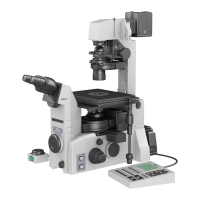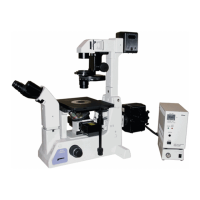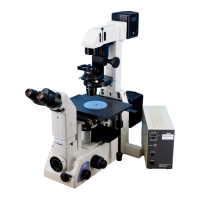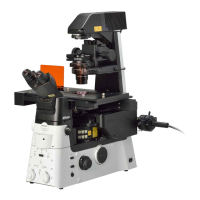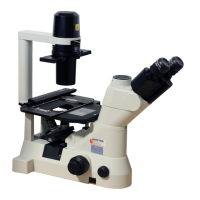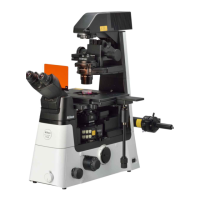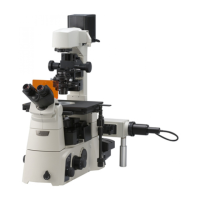II. Microscopy
23
10. Change the specimen.
Use the “objective refocusing ring” on the microscope main
body, the “tilting” of the dia-illuminator, and the
“condenser refocusing clamp” to facilitate specimen
replacement.
11. After the completion of microscopic procedures
1) Turn off the “power switch” of the power supply. (Flip the
switch to {.)
2) After the lamphouse section cools, place the vinyl cover on
the microscope.
1-2. Phase-contrast (Ph) microscopy
Key point: Move Ph objective and condenser module with the same Ph code into the optical path, and align (center) the
phase plate in the objective and the annular diaphragm in the condenser module before conducting
microscopy.
1. Focus on the specimen using bright-field (BF) microscopy.
2. Set the microscope for phase-contrast microscopy.
1) Move a Ph objective into the optical path.
2) Turn the “condenser turret
and set it to the same Ph code
as that of the objective placed in the optical path in step 1).
3) Turn the “aperture diaphragm lever” on the condenser to
the right limit to open the “aperture diaphragm” fully.
Supplementary information
If the “aperture diaphragm
is not fully open, the optical
path of the annular diaphragm will be restricted,
preventing the realization of the appropriate phase
contrast effect.
4) Raise the “field diaphragm lever
on the dia-illuminator to
the limit to open the field diaphragm fully.
Supplementary information
When “ELWD-S condenser” is used:
The “aperture diaphragm” of the “ELWD-S condenser”
works only with the bright-field optical path, and it does
not affect the phase-contrast optical path. Therefore,
there is no need to open the “aperture diaphragm” fully
in step 3).
All the annular diaphragms of the “ELWD-S condenser
will be simultaneously centered when the PhL
diaphragm is centered. Therefore, move a PhL
objective in the optical path, set the “condenser turret
to the "PhL" indication, and proceed to the next step.
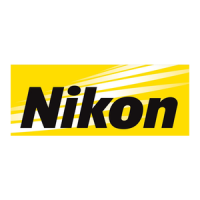
